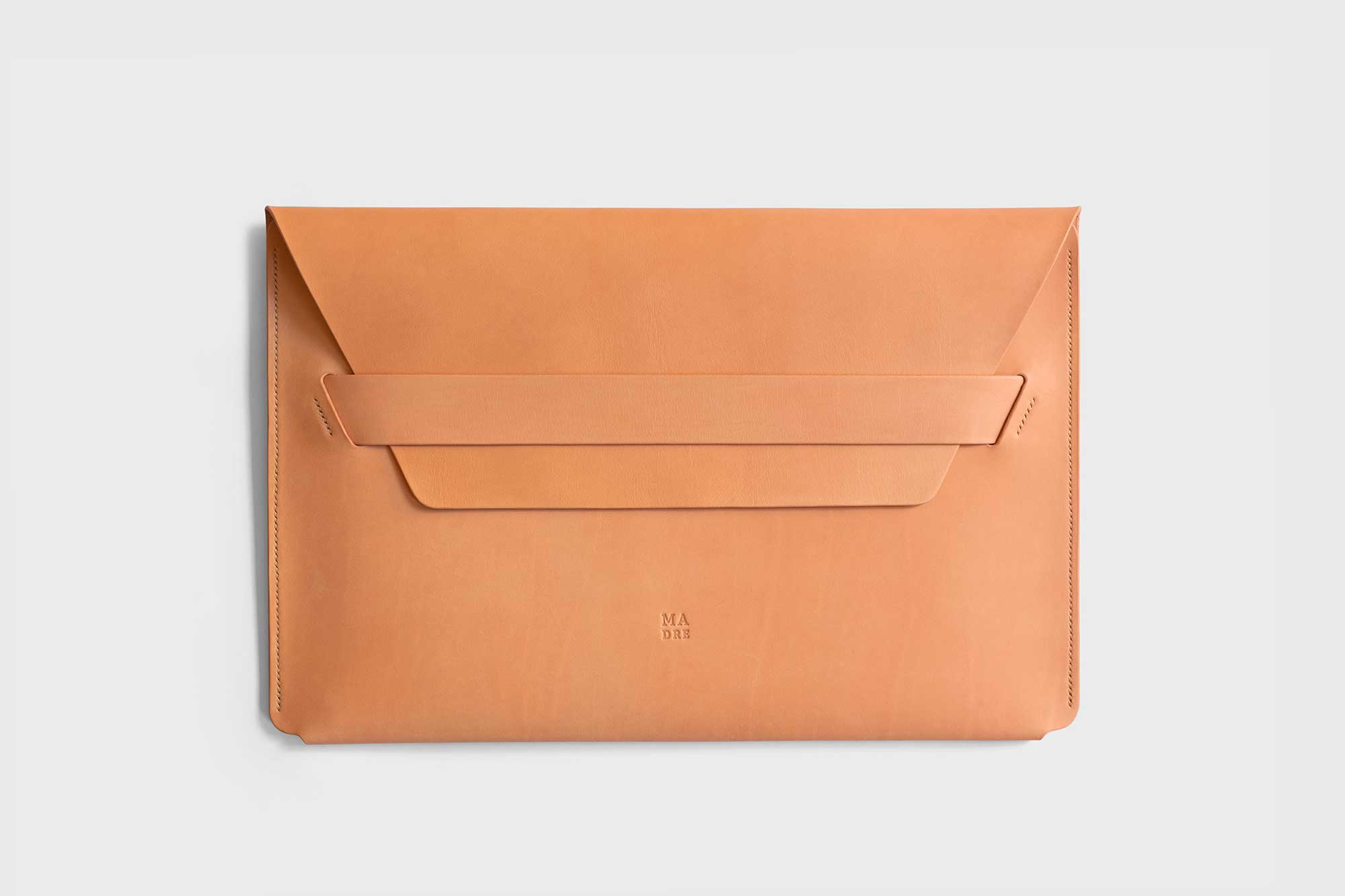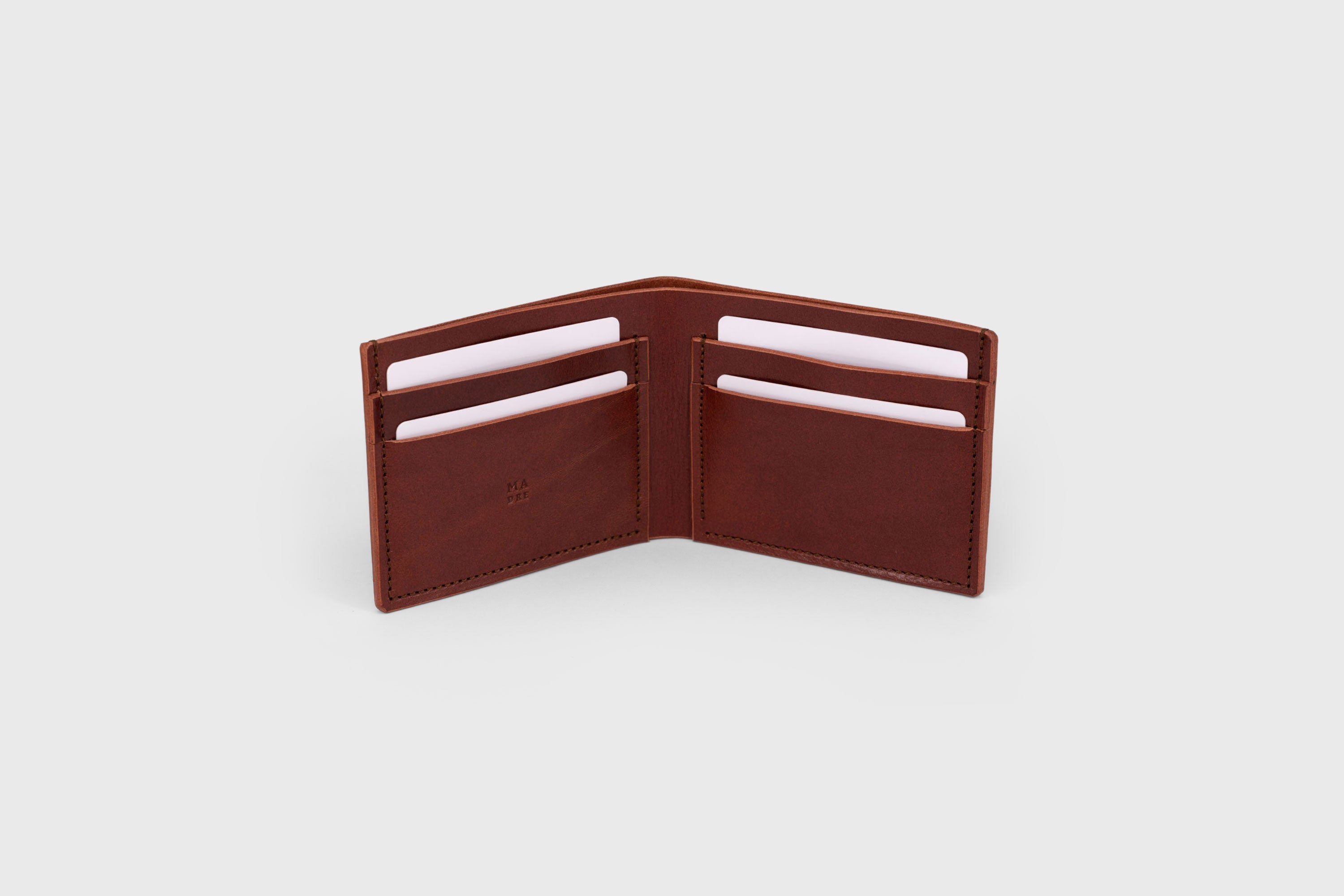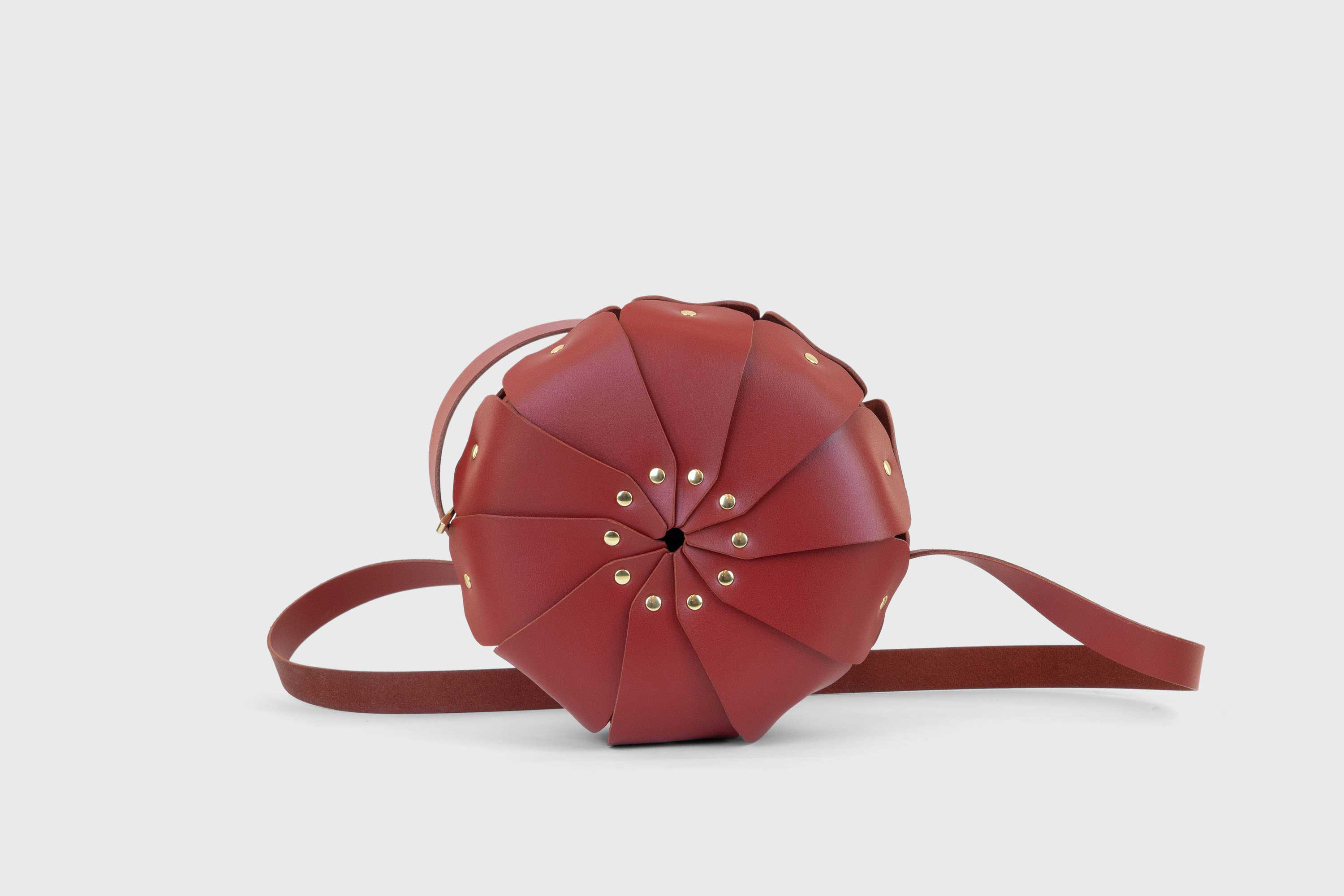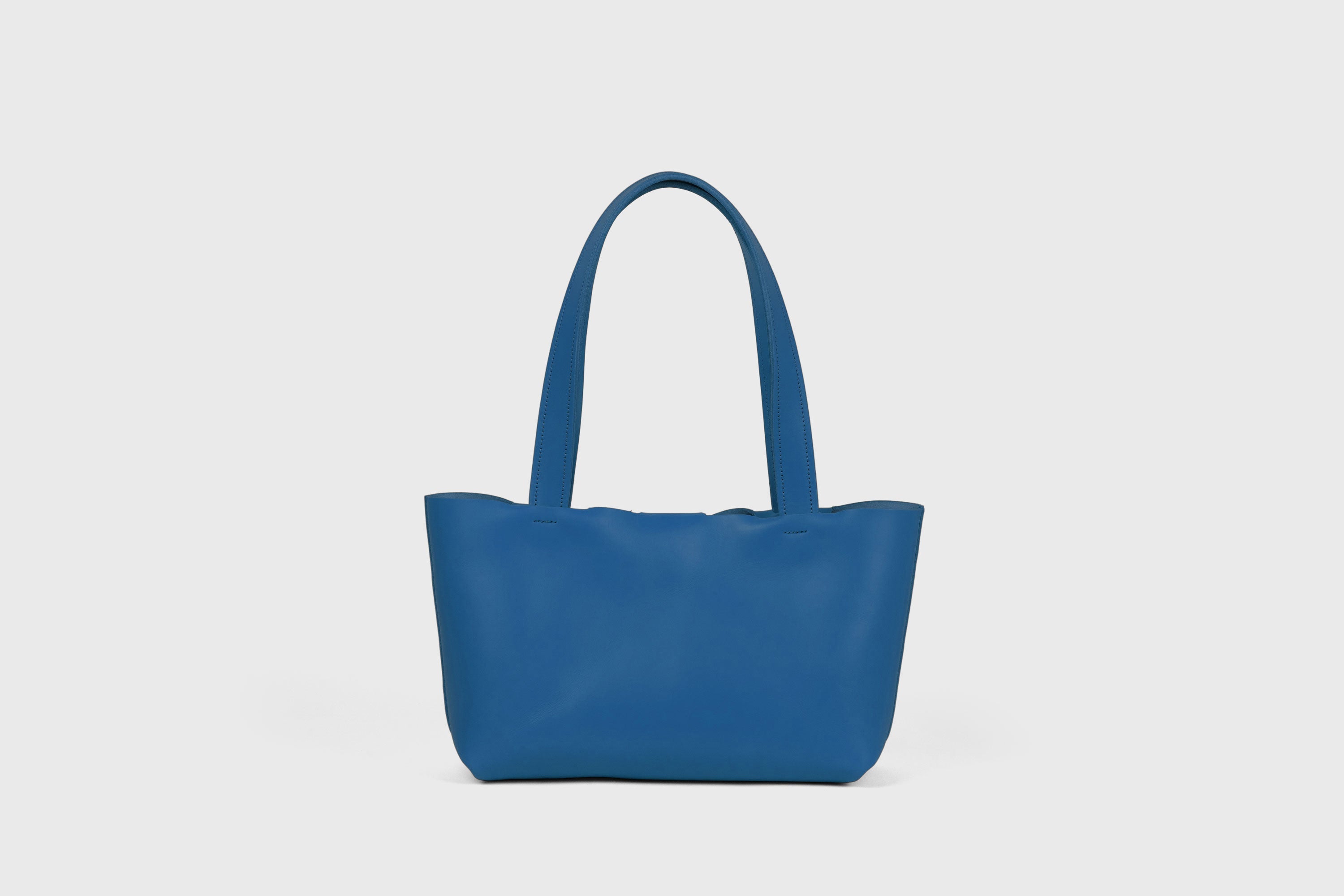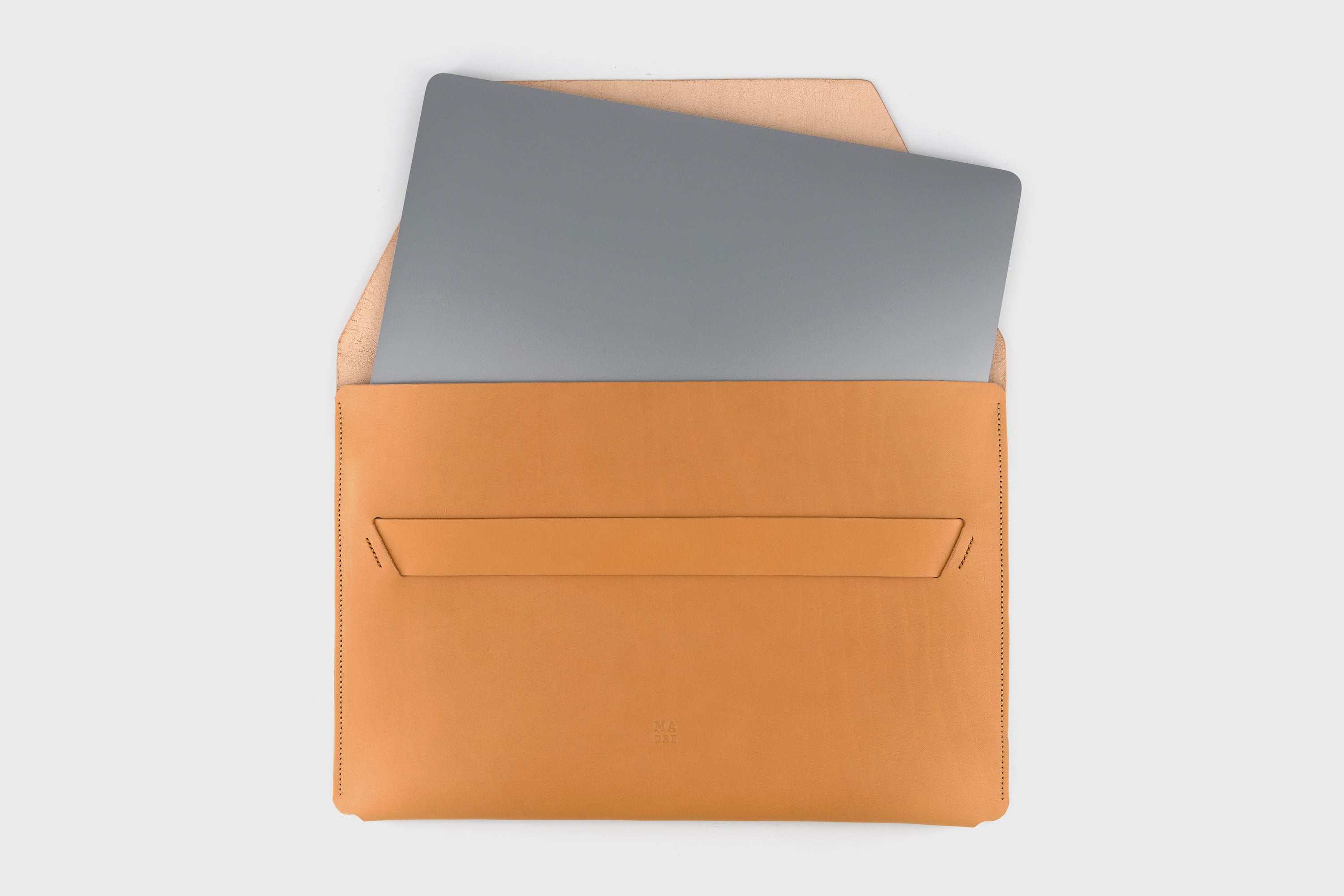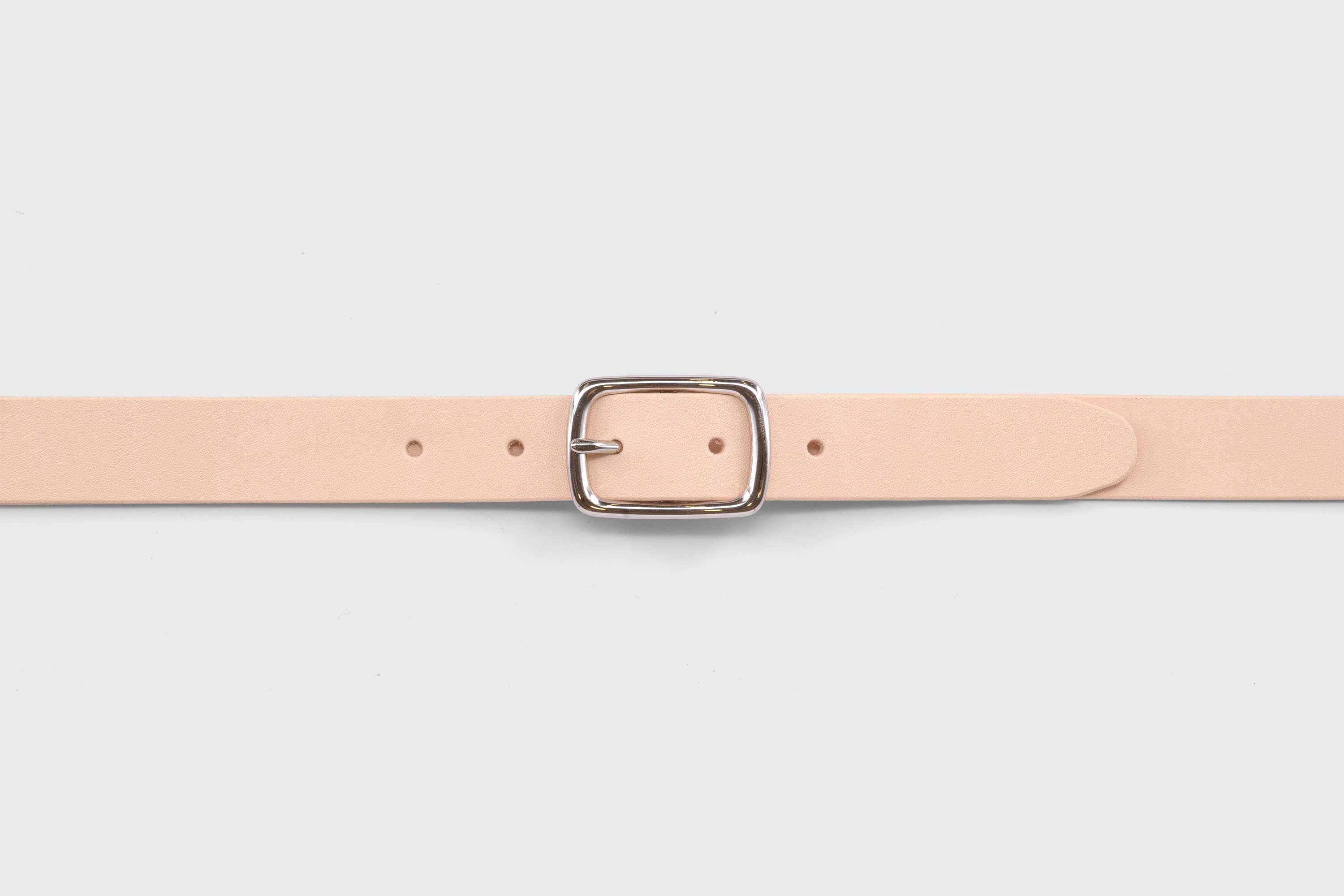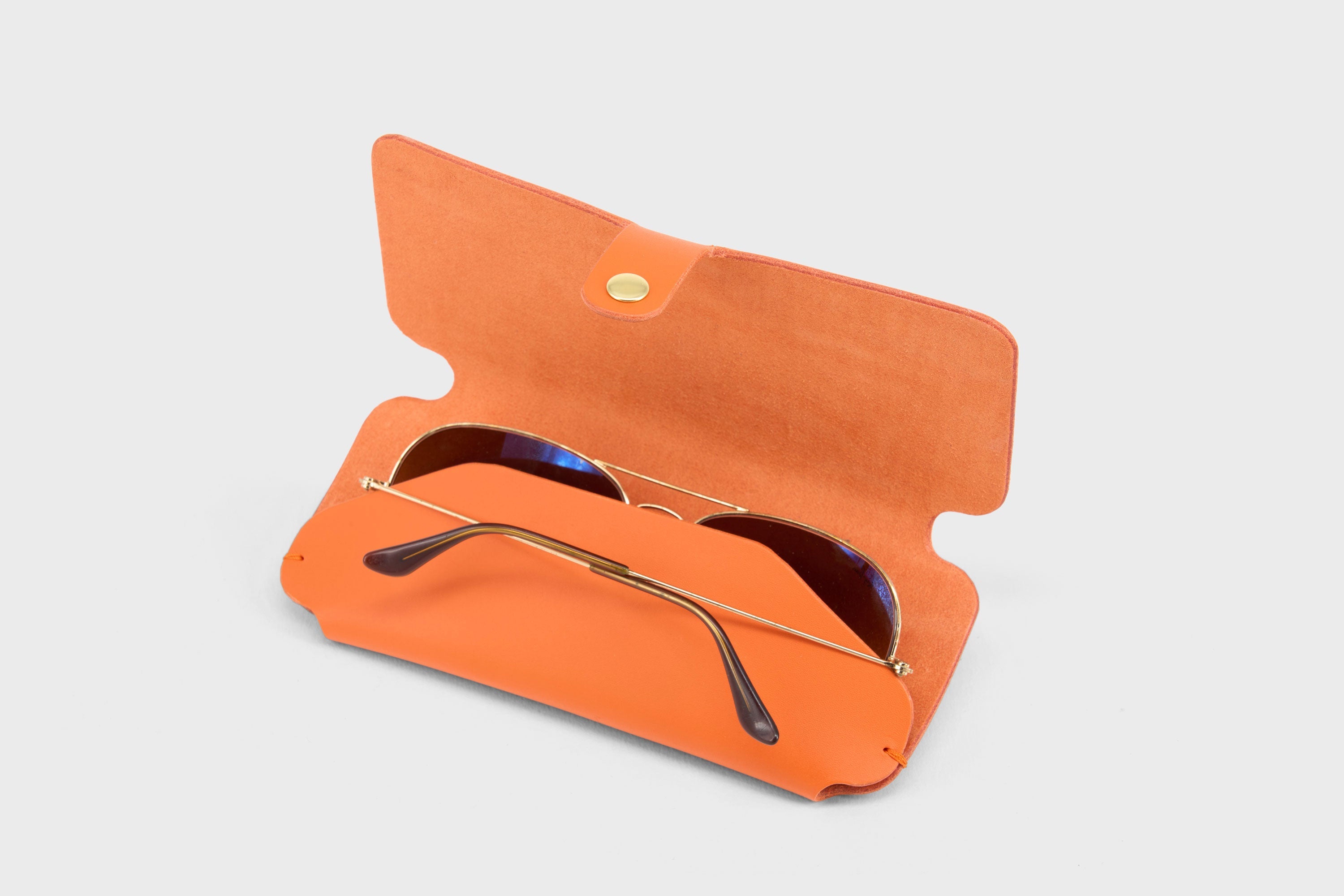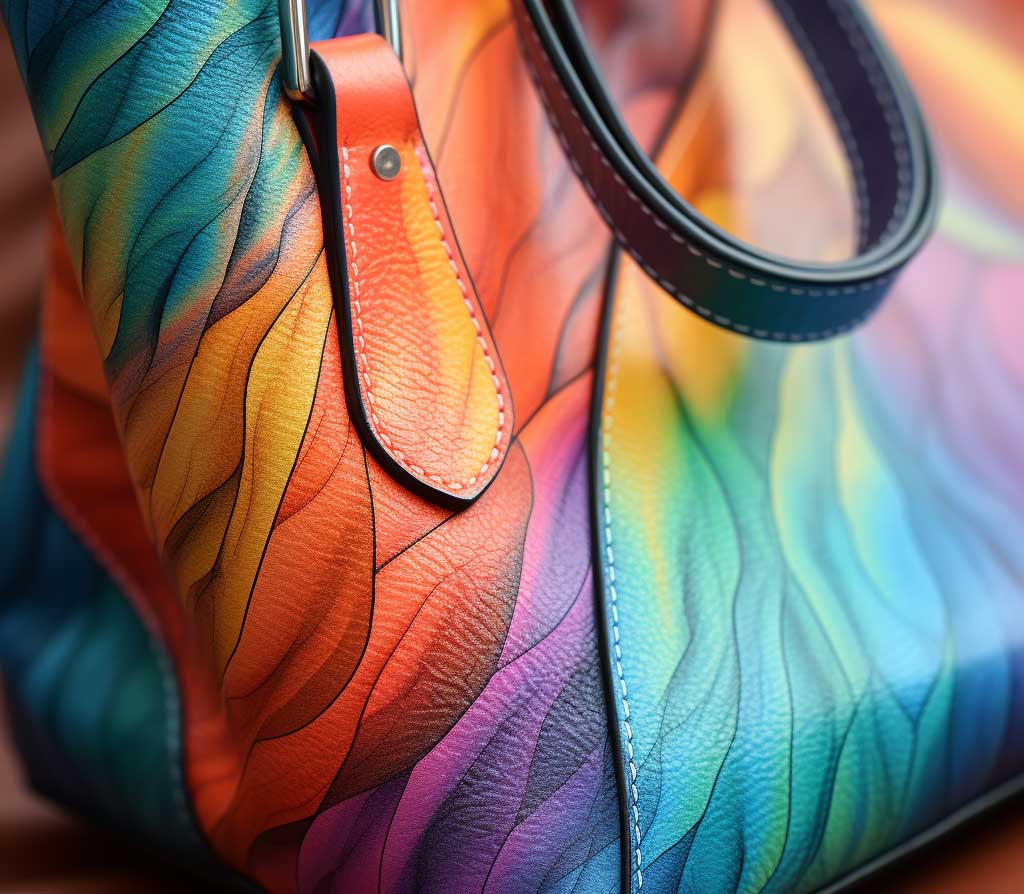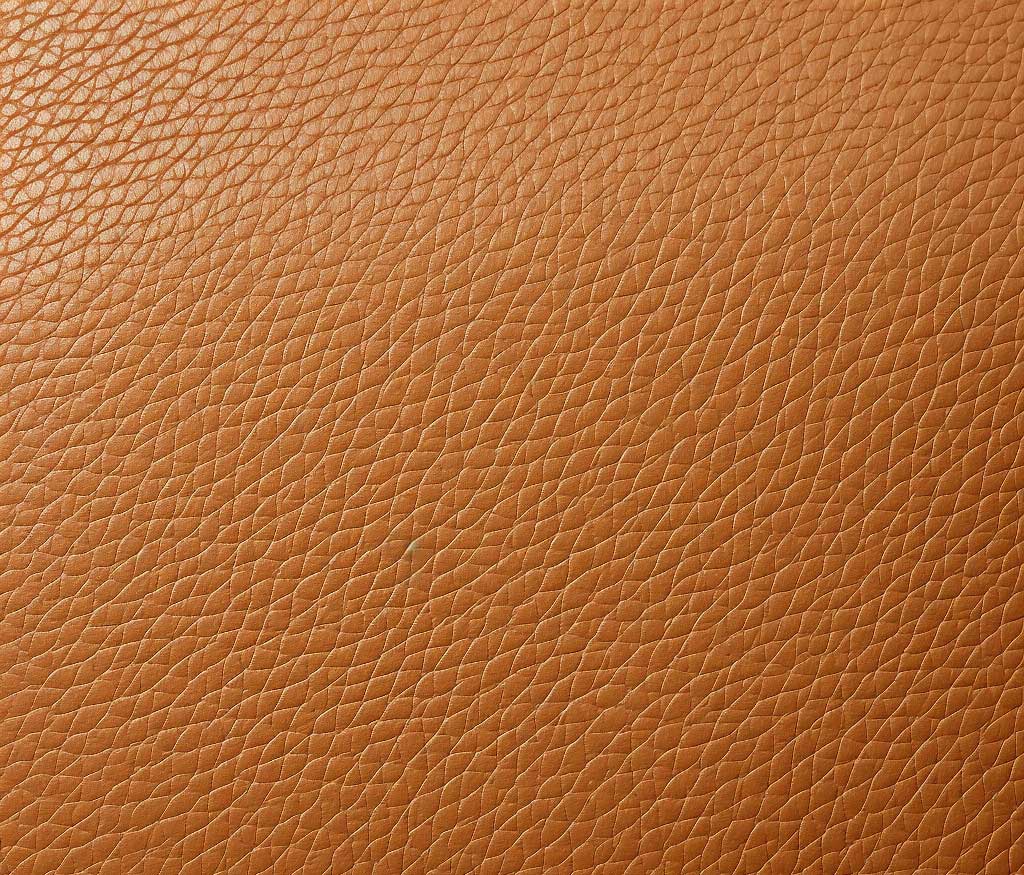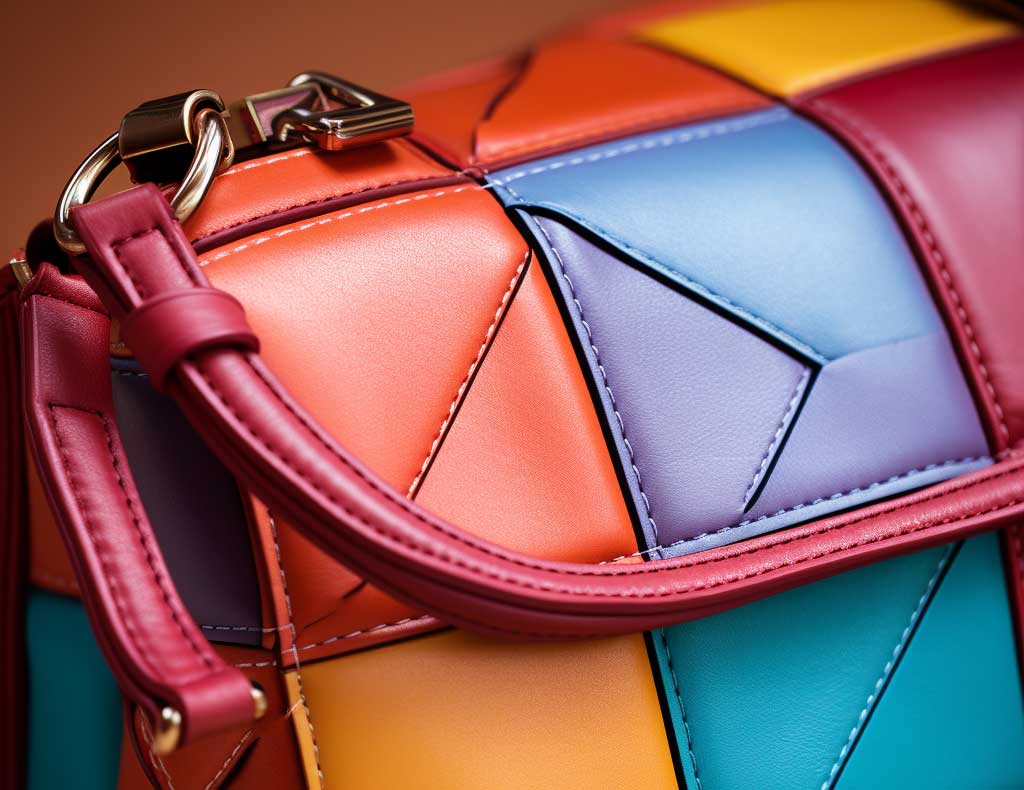
Faux Leather Unveiled: Is It a Worthy Substitute for Genuine Leather?
Welcome to another post from Atelier Madre, your trusted source for the finest vegetable-tanned, full-grain leather goods. Today, we turn our focus to a material that has been gaining popularity in recent years — faux leather. This man-made product, often marketed as a cost-effective, cruelty-free alternative to real leather, has its fair share of controversies and misconceptions. In this comprehensive guide, we will delve into what faux leather truly is, the pros and cons, its environmental impact, and how it measures up against full-grain leather. Let's shed light on the truth behind faux leather and reaffirm our commitment to genuine, high-quality leather products. Join us on this exploratory journey!
What is Faux Leather? An In-depth Look
Faux leather, also known as synthetic leather, is a type of artificial material designed to mimic the aesthetic and some functional aspects of genuine leather. However, it is important to note that "faux leather" is an umbrella term encompassing several types of synthetic leathers, each produced differently and possessing unique characteristics. The two most common types are polyvinyl chloride (PVC) and polyurethane (PU) leathers.
The popularity of faux leather has risen due to its leather-like appearance, affordability, and the claim of being a "cruelty-free" alternative to traditional leather. However, it's essential to delve beneath the surface to understand its true nature.
While faux leather products may be touted for their low cost and animal-friendly production, they do not offer the same durability, breathability, or aging properties as genuine leather. In the following sections, we will further examine the properties, uses, benefits, and drawbacks of faux leather and how it compares to the full-grain, vegetable-tanned leather we champion at Atelier Madre.
What is Faux Leather Made Of?
Faux leather, also known as synthetic leather, is a product that mimics the aesthetic of real leather but is manufactured from synthetic materials instead of derived from the hide of an animal. There are two main types of faux leather: PVC (polyvinyl chloride) and PU (polyurethane).
PVC Leather: This is the earlier form of faux leather, but it's less popular today due to its environmental impact and the health risks associated with its production and disposal. PVC leather is made by bonding a PVC layer to a fabric backing and then treating it with dye, softeners, and other agents to mimic the texture of real leather.
PU Leather: PU leather is more modern and is becoming increasingly popular because it's less harmful to the environment than PVC. It's made by applying a layer of polyurethane to a base layer of fiber (often polyester), which is then treated with heat or embossing to give it a leather-like texture. It's softer, more flexible, and breathes better than PVC leather, offering a more comfortable and quality feel.
However, both PVC and PU faux leathers are made using petroleum and undergo chemical processes. They lack the natural characteristics, breathability, and durability of real leather.
At Atelier Madre, we opt for full-grain, vegetable-tanned leather. This choice supports environmental sustainability, avoids the use of harmful chemicals, and provides a product that is not only superior in quality but also ages gracefully over time, unlike faux leather.
The Manufacturing Process of Faux Leather
Creating faux leather involves a series of complex chemical processes. While the specifics may differ depending on the type of synthetic leather (PVC or PU), the fundamental process remains the same.
First, a fabric base is created. This base is made from polyester, which is then coated with either PVC or PU. In the case of PVC leather, the fabric is coated with a paste that includes PVC, plasticizers (to provide flexibility), and other additives. This coating is then heated to create a uniform layer.
For PU leather, the fabric is coated with a layer of polyurethane. Unlike PVC, this process does not require plasticizers, resulting in a product that's more environmentally friendly than its PVC counterpart.
Regardless of the type, faux leather is then treated with dyes, embossing, or other processes to give it a texture and appearance that mimics genuine leather.
Though this manufacturing process can produce a material that closely resembles the look of real leather, it’s important to note that faux leather lacks the unique natural properties of leather, such as its ability to breathe, resist wear over time, and develop a patina. This distinction becomes apparent over time and with regular use of the product.
Why Brands Choose Faux Leather: An Economical and Versatile Choice
It's no secret that faux leather has become a popular material in the fashion industry. There are several reasons why many brands have opted for this alternative over its natural counterpart.
Cost-Effective: Faux leather materials are generally more affordable to produce than real leather. They require less processing and the raw materials are less expensive. For businesses, this results in lower production costs, allowing for higher profit margins or more affordable pricing for customers.
Versatility: Faux leather can be produced in a variety of colors, textures, and finishes, making it a very versatile material for designers. Unlike real leather, it can be made to mimic exotic animal skins without the ethical issues associated with the use of such materials.
Consistency: Faux leather provides a uniform look and feel, without the natural markings and variations found in real leather. This consistency makes it easier for manufacturers to maintain the same quality and appearance across multiple products.
Ease of Care: Products made from faux leather tend to be easier to clean and maintain than those made from real leather. They can often be wiped clean with a damp cloth, making them a convenient choice for busy consumers.
Vegan-Friendly: With growing consciousness about animal rights and environmental issues, many consumers are seeking vegan and cruelty-free products. Faux leather offers a viable alternative for these consumers, aligning with their ethical values.
While faux leather offers several advantages for businesses and consumers alike, it’s important to remember that not all faux leathers are created equal. Many are made using plastic materials, such as PVC or PU, which come with their own environmental concerns. At Atelier Madre, we prioritize sustainability and quality, choosing to work with full grain, vegetable-tanned leather for our products. This choice aligns with our commitment to environmental responsibility and our desire to provide durable, long-lasting accessories.
Faux Leather Vs. Genuine Leather: A Comparison
When you're trying to decide between faux leather and genuine leather, it helps to understand the key differences between the two.
Texture and Appearance: While high-quality faux leather can be made to look like real leather, there are subtle differences. Genuine leather has unique patterns and imperfections, while faux leather has a more uniform appearance. Over time, real leather develops a patina, a sheen that adds character and beauty to the product, whereas faux leather remains unchanged.
Durability: Genuine leather, especially full-grain leather like that used by Atelier Madre, is incredibly durable. It can last for years, even decades, with proper care. Faux leather, on the other hand, doesn't last as long and can peel or crack over time, especially when exposed to sun or heat.
Breathability: Leather is a natural product that can breathe and adapt to temperature changes, making it comfortable for clothing and accessories. Faux leather, being a plastic product, does not breathe, which can lead to discomfort if used in clothing or seating.
Care: Faux leather is easier to clean and maintain than genuine leather. It can generally be wiped clean with a damp cloth, while genuine leather requires specific cleaning products and techniques to keep it in good condition.
Environmental Impact: The production of faux leather involves petroleum-based products and can release harmful dioxins. Genuine leather, on the other hand, is a natural product. Atelier Madre, for instance, uses vegetable-tanned leather, which is a much more environmentally friendly option.
Cost: Faux leather is generally cheaper than genuine leather. However, considering the longevity and quality of genuine leather, the latter often provides better value in the long run.
In the end, the choice between faux and genuine leather comes down to your personal preferences, needs, and values. For those who value sustainability, longevity, and unique aesthetics, genuine full-grain vegetable-tanned leather products from Atelier Madre are an excellent choice.
Faux Leather: Facts and Figures
To better understand the reach and impact of faux leather, here are some essential facts and figures.
Market Growth: The global faux leather market was valued at USD 26.3 billion in 2018 and is expected to grow at a compound annual growth rate (CAGR) of 6.4% from 2019 to 2025. This growth is driven largely by increasing demand for animal-friendly products.
Dominant Industry: The automotive industry is one of the largest consumers of faux leather, using it in vehicle interiors for seats, steering wheel covers, door panels, and more. The versatility and durability of faux leather make it an appealing choice for this industry.
Type of Faux Leather: PU (polyurethane) leather is the most commonly used type of faux leather due to its resemblance to genuine leather and its flexibility. It accounted for over 60% of the total revenue in 2018.
Regional Usage: The Asia Pacific region dominated the faux leather market in 2018, accounting for over 40% of the global revenue. This dominance is attributed to the rapid industrialization and urbanization in the area.
Environmental Impact: While faux leather is often marketed as a more eco-friendly alternative to real leather, it's important to note that many types of faux leather are made from plastic materials, which can have a negative environmental impact. The production of PVC (polyvinyl chloride), for instance, releases dioxin, a potent carcinogen.
Remember that not all faux leathers are created equal, and many come with their own environmental and ethical concerns.
The Impact of Faux Leather on the Fashion Industry
In recent years, the fashion industry has seen a significant shift towards more sustainable and cruelty-free practices, with faux leather at the helm of this transformative movement.
Faux leather has significantly influenced the fashion industry, offering a cost-effective and ethically appealing alternative to traditional animal-based leather. The demand for faux leather products has skyrocketed due to a confluence of factors, including changing consumer attitudes, new regulations, and advancements in faux leather production.
Consumer Attitudes: Modern consumers are increasingly concerned about the ethical and environmental impact of their purchases. The preference for cruelty-free and environmentally friendly options has made faux leather an attractive choice for fashion-savvy, yet conscious buyers.
Regulations: Countries and organizations worldwide are implementing stricter regulations on animal welfare and environmental protection. These regulations have prompted many fashion brands to seek alternatives to traditional leather, leading to a surge in faux leather usage.
Technological Advancements: The quality of faux leather has improved dramatically over the years, thanks to technological advancements. Modern faux leather can replicate the look and feel of real leather quite convincingly, which was not the case a few decades ago. These improvements have made faux leather more acceptable in high-fashion circles.
The usage of faux leather is now widespread in the fashion industry, evident in everything from high-end designer collections to more affordable retail lines. Brands like Stella McCartney have even built their entire ethos around being leather-free, proving that high fashion can indeed be cruelty-free.
The rise of faux leather has also prompted an exploration into even more sustainable alternatives. For instance, bio-based leathers made from fruit waste, mushrooms, and other organic materials are gaining traction.
However, while faux leather has many merits, it is crucial to note that it's not a perfect solution. Many types of faux leather are petroleum-based and do not biodegrade, leading to potential environmental concerns. As the fashion industry continues to innovate and evolve, the challenge will be to develop faux leather alternatives that not only replicate the positive attributes of real leather but also address these sustainability concerns.
Innovations in Faux Leather Production: Towards Sustainable Alternatives
While traditional faux leather comes with a set of environmental issues, recent years have witnessed significant advancements in the field. Innovators are now working to create bio-based faux leathers that could provide a more eco-friendly alternative to both real leather and synthetic faux leather.
Plant-Based Faux Leather: Some of the most exciting developments in the industry come from the plant world. Brands are experimenting with a range of plant materials to create leather-like products. For instance, Piñatex is a natural textile made from pineapple leaf fibres, a byproduct of pineapple harvest. It offers a textured finish similar to real leather and is biodegradable at the end of its lifecycle.
Similarly, another company has developed MuSkin, a type of faux leather made from mushroom mycelium. This 100% biodegradable material is breathable, flexible, and can be tanned without the use of chemicals, making it an environmentally friendly choice.
Lab-Grown Leather: Another promising innovation in the field is lab-grown leather. This process involves using cellular agriculture to grow collagen, a protein found in animal skin, in a lab setting. The result is a material that is biologically identical to animal leather, but produced without harming any animals and with significantly less environmental impact.
Recycled and Upcycled Leather: There are also efforts to make faux leather more sustainable by using recycled and upcycled materials. For example, some brands are creating leather alternatives from recycled plastic bottles or upcycled cork from the wine industry.
While these innovations are still emerging and may not yet be widely available, they hold promise for a future where faux leather can be both aesthetically pleasing and environmentally responsible. These advancements also open new possibilities for Atelier Madre's commitment to sustainability and quality, as we continue to explore the best materials for our range of products.
Caring for Faux Leather Products
While faux leather might not have the durability of full-grain vegetable-tanned leather, proper care can extend its lifespan. Here are some tips on how to maintain faux leather goods:
Keep it Clean: Use a soft, damp cloth to gently clean your faux leather goods. Never use bleach or harsh cleaning products, which can damage the material.
Stay Dry: While faux leather is more water-resistant than genuine leather, it's best to avoid soaking it. If it does get wet, dry it gently with a soft cloth.
Avoid Direct Sunlight: Excessive exposure to sunlight can cause faux leather to fade and crack. Try to keep it out of direct sunlight for extended periods.
Use a Conditioner: There are conditioners specially designed for faux leather that can keep it supple and prevent cracking. Apply the conditioner according to the instructions on the bottle.
Store Properly: When not in use, store faux leather goods in a cool, dry place away from direct sunlight. For items like jackets or bags, use a padded hanger or stuff the item with tissue paper to maintain its shape.
Though these steps can help maintain faux leather, it's worth noting that full-grain vegetable-tanned leather from Atelier Madre, with the right care, can last for generations, enhancing its beauty over time. In contrast, even with the best care, faux leather will eventually degrade due to its synthetic composition.
How to Clean Faux Leather
Faux leather can be straightforward to clean if you follow the right steps. Here's how to keep your faux leather items looking their best:
Regular Dusting: Start by dusting your faux leather item with a soft, dry cloth. This step is crucial as it removes any surface dust or dirt, preventing them from being rubbed into the material during the cleaning process.
Mild Soap Solution: Create a solution using warm water and a few drops of mild dish soap. Always avoid harsh detergents or chemicals that can damage the faux leather.
Soft Cloth Cleaning: Dip a soft cloth into the soapy water and wring it out so it's damp but not soaked. Gently wipe the faux leather surface with the cloth. Do not scrub or rub the surface too hard as it can damage the faux leather.
Rinse and Dry: Rinse out the cloth in clean water, wring it out, and wipe the faux leather again to remove any soap residue. Follow this by drying the surface with a dry towel.
Special Cleaners: For tough stains, you might need a special faux leather cleaner. Always follow the manufacturer's instructions and test any product on an inconspicuous area first.
Conditioning: After cleaning, you may consider using a faux leather conditioner to maintain its shine and prevent cracking.
Remember, faux leather doesn't have the self-healing or patina development characteristics of full-grain, vegetable-tanned leather, like the ones we use in our Atelier Madre products. Our quality leather goods not only offer longevity but also grow more beautiful with time and use, making them a worthwhile investment.
The Environmental Impact of Faux Leather
There's a common perception that faux leather is an environmentally friendly alternative to traditional leather because it spares animals. However, the reality is more complex. Faux leather is usually made from petroleum-based products like PVC or polyurethane, which are non-renewable resources and have a significant environmental footprint during production. Furthermore, these materials don't biodegrade and can release harmful substances when disposed of improperly.
Here's a quick comparison with full-grain vegetable-tanned leather:
Resource Consumption: Synthetic materials like those used in faux leather are derived from oil, a non-renewable resource, whereas genuine leather comes from animal hides, a by-product of the meat industry.
Production Process: The manufacture of faux leather involves the use of hazardous chemicals and significant energy consumption. On the other hand, the vegetable-tanning process used by Atelier Madre is free of harmful substances and utilises natural ingredients.
Durability: As previously mentioned, full-grain vegetable-tanned leather is more durable than faux leather, which means products last longer, reducing the frequency of replacement and, thus, the consumption of resources.
End of Life: Faux leather doesn't biodegrade and can release harmful substances in the environment when disposed of improperly. Contrastingly, vegetable-tanned leather is biodegradable and can return to the environment without causing harm after its lifespan.
Considering these aspects, one might argue that full-grain vegetable-tanned leather products from Atelier Madre offer a more sustainable choice compared to faux leather items.
Durability Comparison: Faux Leather vs. Full-Grain Vegetable-Tanned Leather
Faux leather may offer a similar look to genuine leather, but when it comes to durability, it can't compete with the real deal, especially full-grain vegetable-tanned leather.
Faux Leather: This material is created by applying a layer of plastic to a fabric base. Over time, and with regular use, faux leather can start to peel and crack, especially in high-contact areas or if exposed to heat and sunlight. Also, faux leather doesn't breathe, which can make it uncomfortable to wear or sit on for extended periods.
Full-Grain Vegetable-Tanned Leather: This leather has not been sanded or buffed to remove natural marks on the surface, making it the highest grade of leather money can buy. It's extremely resilient, and with the right care, can last a lifetime. Unlike faux leather, it ages beautifully, developing a rich patina over time, which enhances its aesthetic appeal. It's breathable, comfortable, and becomes more flexible with use, all without losing its strength or durability.
With Atelier Madre, you're investing in an accessory that not only stands the test of time but also becomes more beautiful and personal as the years go by.
Environmental Impact: Faux Leather vs. Full-Grain Vegetable-Tanned Leather
The environmental footprint of faux leather and full-grain vegetable-tanned leather differs greatly, further reinforcing the advantages of choosing high-quality, responsibly sourced leather products.
Faux Leather: While it may seem like a more eco-friendly option since it's not made from animal hides, faux leather has its own environmental challenges. It's primarily made from petroleum, a non-renewable resource. The process of creating faux leather also involves the use of toxic chemicals that can be harmful to both humans and the environment. Additionally, faux leather products typically have a shorter lifespan than genuine leather items and are non-biodegradable, adding to landfill waste.
Full-Grain Vegetable-Tanned Leather: At Atelier Madre, we use full-grain, vegetable-tanned leather for our products. This is the most eco-friendly type of leather available, as it's tanned using natural materials like tree bark, rather than harmful chemicals. This process has a much lower environmental impact. Furthermore, because our leather is so durable, it keeps our products out of landfills for much longer than their faux counterparts.
Choosing full-grain vegetable-tanned leather products from Atelier Madre means supporting sustainable practices and investing in a piece that's designed to last, reducing the need for fast-fashion alternatives.
Faux Leather Maintenance and Durability: What You Need to Know
When it comes to maintenance and durability, faux leather falls short compared to full-grain, vegetable-tanned leather. Faux leather may be easy to clean with a simple wipe-down, but it lacks the long-lasting durability that real leather offers.
Faux leather is prone to cracking and peeling over time, especially when exposed to sunlight or heat. Even with careful use, it just doesn't have the lifespan of genuine leather. This material cannot absorb oils or conditioners, which are often used to prolong the life of leather goods.
On the other hand, products made from full-grain, vegetable-tanned leather like those from Atelier Madre are built to last and age beautifully with use. They develop a unique patina over time, which enhances the look and character of the product. Moreover, when properly cared for, our leather products can last for decades, often becoming family heirlooms.
So, while faux leather might have a lower upfront cost, in the long run, investing in a high-quality, genuine leather product from Atelier Madre could save you money and contribute less to waste.
Is Faux Leather Waterproof?
Faux leather's resistance to water is one of its selling points, especially compared to genuine leather, which can absorb water and potentially stain or warp as a result. Faux leather has a plastic-based surface which inherently repels water, making it resistant to spills and moisture.
However, it's important to note that while faux leather does have good water-resistant properties, it is not entirely waterproof. Extended exposure to water or heavy rain can eventually seep through the seams or saturate the material, especially if it has been scratched or worn.
Furthermore, water exposure can also degrade the material over time, leading to peeling and cracking, especially if the item is not thoroughly dried after becoming wet.
At Atelier Madre, while we do acknowledge these benefits of faux leather, we believe that the beauty, longevity, and breathability of vegetable-tanned, full-grain leather outweigh the water-resistant properties of faux alternatives. With proper care, our genuine leather products can last a lifetime, evolving in character and developing a rich patina over time.
FAQs about Faux Leather
What is faux leather made of?
Faux leather is primarily made from plastic materials such as PVC or polyurethane. It's designed to mimic the look and feel of real leather but doesn't have the same durability or quality.
How long does faux leather last?
Faux leather's lifespan is much shorter than that of real leather. It tends to peel or crack over time, especially when exposed to heat and sunlight. Even with proper care, faux leather items typically last only a few years compared to the decades-long longevity of genuine leather products.
How do you clean faux leather?
Faux leather can be cleaned with a damp cloth. For tougher stains, a mild soap solution can be used. However, aggressive scrubbing or harsh chemicals can damage the surface.
Is faux leather eco-friendly?
While faux leather does not use animal products, it's not necessarily eco-friendly. The production process often involves harmful chemicals, and because faux leather doesn't last as long as real leather, it can lead to more waste.
Can faux leather be repaired?
Small cracks and tears in faux leather can be patched up, but it's not always a perfect fix. The patched area may not blend seamlessly, and the underlying problem of peeling and cracking may continue.
Does faux leather breathe?
No, faux leather does not breathe like real leather, which can make faux leather products less comfortable as they can cause sweating and don't adjust well to body temperature.
Does faux leather stain?
Faux leather is more stain-resistant than real leather as it's not porous. However, it can still be marked by ink or dyed by dark clothing.
Is faux leather animal-friendly?
Faux leather does not involve the use of animal hides. However, its environmental impact and the potential harm caused by its production should also be considered when assessing its overall "friendliness."
Can faux leather furniture be reupholstered?
Yes, faux leather furniture can be reupholstered. However, the cost and effort of reupholstering may not be worth it given faux leather's relatively short lifespan.
Why choose genuine leather over faux leather?
Genuine leather, especially full-grain, vegetable-tanned leather like that used by Atelier Madre, is more durable, ages better, and is generally higher quality. Though it requires more care, it can last for decades and often becomes more beautiful with time.
Faux Leather: The Pros and Cons
When it comes to choosing a material for your accessories, it's important to consider all the facets of each option. Here are some pros and cons to keep in mind if you're thinking about faux leather:
Pros of Faux Leather:
Affordability: Faux leather items are generally less expensive than their genuine leather counterparts. They can offer a budget-friendly way to achieve a high-end look.
Versatility: Faux leather can be produced in a vast array of colors, textures, and patterns, making it a highly versatile choice for fashion and home decor.
Maintenance: Faux leather is relatively easy to clean and maintain. It's usually resistant to scratches and sun damage, unlike real leather.
Consistency: Faux leather products are more uniform than real leather, as they're man-made and don't possess the natural variations that real leather has.
Cons of Faux Leather:
Durability: Faux leather typically doesn't last as long as real leather. It can crack, peel, and deteriorate over time, especially when exposed to heat and humidity.
Feel: Despite improvements in technology, faux leather still doesn't have the same quality feel or unique aroma that real leather has.
Sustainability: Many faux leathers are made from petroleum products and are not biodegradable. They also don't age well, unlike full-grain leather, which can develop a beautiful patina over time.
Breathability: Faux leather doesn't breathe in the same way as real leather, which can make it less comfortable for clothing or upholstery.
In summary, while faux leather has its advantages, it might not offer the long-term value, aesthetic appeal, or environmental benefits you're looking for. If you're after a product that combines durability, beauty, and eco-consciousness, consider the full-grain, vegetable-tanned leather goods from Atelier Madre. These accessories offer the premium feel of real leather, are crafted sustainably, and are designed to last a lifetime, making them a worthwhile investment.
Is Vegan Leather the Same as Faux Leather?
The terms "vegan leather" and "faux leather" are often used interchangeably in the fashion industry, but they are not exactly the same thing.
Both vegan and faux leather are alternatives to real leather, but the defining difference lies in their material composition and their environmental impact. Faux leather typically refers to synthetic leathers made primarily from plastic materials such as PVC or polyurethane.
Vegan leather, on the other hand, is a broad term encompassing all non-animal leathers. This includes the traditional faux leathers as well as more eco-friendly alternatives. Some vegan leathers are made from innovative, plant-based materials such as pineapple leaves, cork, apples, and even mushrooms. These materials can provide a more sustainable and environmentally friendly alternative to both real leather and traditional faux leather.
However, it’s important to remember that not all vegan leathers are more sustainable or eco-friendly. Many are made using the same synthetic materials as faux leather, with all the associated environmental concerns.
When considering a leather alternative, it's crucial to look beyond the labels and understand the material's actual composition. Always look for detailed information about the material and its production process to make an informed choice. If you're looking for a truly eco-conscious choice, consider Atelier Madre's full-grain, vegetable-tanned leather products. They offer the beauty and durability of real leather with a significantly lower environmental impact compared to many faux and vegan leathers.
Why Atelier Madre Uses Full Vegetable-Tanned Leather: Sustainability and Quality
At Atelier Madre, our commitment to sustainability and quality drives every choice we make, especially when it comes to selecting our materials. We have made the conscious decision to use full vegetable-tanned leather, and here's why:
Environmentally Friendly: Unlike chrome-tanning and synthetic alternatives like faux leather, vegetable tanning uses natural tannins derived from plants. This means it doesn't contribute to heavy metal pollution, a common issue with chrome-tanned leathers. Our choice reflects our commitment to environmentally responsible practices that align with our values as a brand.
Durability and Longevity: Full vegetable-tanned leather is known for its strength and durability. Products made from this type of leather can last for years, even decades, reducing the need for frequent replacements and decreasing waste. This longevity, combined with the timeless design of our products, makes every Atelier Madre piece a long-term investment.
Unique Characteristics: Every piece of vegetable-tanned leather has its own unique characteristics. Over time, it develops a patina, a natural aging process that enhances the beauty and uniqueness of each product. This ensures that every Atelier Madre product is not just a purchase, but a personalized piece that matures with you.
Sensory Experience: Beyond its visual appeal, vegetable-tanned leather offers a unique sensory experience. It has a distinct smell, feels great to touch, and even sounds different when you handle it. This enhances the user's connection to the product, making it more than just a functional item, but a piece to be cherished and enjoyed.
Supporting Traditional Craftsmanship: Vegetable tanning is one of the oldest methods of leather tanning, and by using vegetable-tanned leather, we're not just creating products—we're preserving this age-old tradition and the skills of the craftspeople who have mastered it.
In conclusion, our use of full vegetable-tanned leather at Atelier Madre is not just a choice, but a statement. A statement of our unwavering commitment to sustainability, quality, and the beauty of natural, handcrafted products.
Discover the Whole Collection at Atelier Madre
At Atelier Madre, we pride ourselves on our full range of sustainable and meticulously crafted vegetable-tanned leather goods. Our collection speaks volumes about our commitment to quality, functionality, and timeless elegance. Here's a look at what you can expect when you explore our offerings:
Bags: From day-to-day handbags, practical and stylish tote bags, to elegant evening clutches, we offer a range of styles to suit various occasions and personal tastes. Each piece is crafted from full vegetable-tanned leather and made to age gracefully, becoming a testament to your experiences.
Accessories: Our line of accessories is designed with the same care and attention to detail as our larger pieces. This includes wallets, belts, card holders, and laptop sleeves. All are crafted from our signature vegetable-tanned leather, providing the perfect balance of style and durability.
Made-to-Order Options: For those seeking a truly unique piece, we offer made-to-order services. This allows you to customize aspects of your chosen product, from the type of leather to the color of stitching. This service embodies our commitment to personal expression and individuality.
New Arrivals: We are continually innovating and expanding our collection. By keeping an eye on our Instagram, you'll be the first to discover our latest designs and additions.
At Atelier Madre, we create products that are more than just items you own—they're a part of your lifestyle. When you choose our products, you're not just buying a leather good, you're investing in a sustainable lifestyle and contributing to the preservation of traditional craftsmanship.
We invite you to discover our full collection and join us in our journey towards sustainable fashion. From the natural tannins used in our tanning process to the love and care that goes into every stitch, our collection is a testament to our passion for quality and sustainable practices. Explore the world of Atelier Madre today, and experience the difference of full vegetable-tanned leather.


